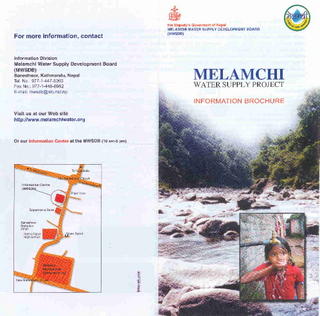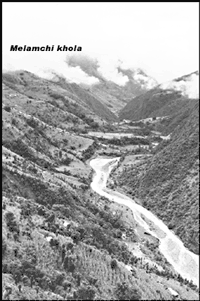 Gagan Thapa : Urgent action filed at UN
Gagan Thapa : Urgent action filed at UN Working Group on Arbitrary Detention
c/o. Office of the UN High Commissioner for Human Rights
United Nations Office at Geneva
CH-1211, Geneva 10 , Switzerland
Subject: Urgent Action
Dear Madam/ Sir
I, Goviinda Prasad Sharma, on his behalf of Gagan Thapa, request the Working Group on Arbitrary Detention to issue an urgent action against His Majesty the King of Nepal under its special procedures.
1. Mr. Gagan Thapa, 30, student leader and former general secretary of Nepal Student Union, was re arrested by plain cloth security personnel on 27th July 2005 at about 9.30 am from Anamnagar Kathmandu. Mr. Thapa was arrested while he and other his colleagues Mr. Ajaya Shivakoti and Mr. Subodh Acharya had gone to meet Mr. Pradeep Poudyal, vice-chairman of Nepal Students’ Union who has been detained at Ward Police Office in Singh Durbar Kathmandu. Mr. Poudyal and five other student leaders have been detained under Public Offence Act. According to Mr. Ajaya Siwakoti, an eyewitnes s, “The plainclothes policemen claiming themselves to be from inquiry branch took him in a police van and taken to the Tinkune Police post Kathmandu.
s, “The plainclothes policemen claiming themselves to be from inquiry branch took him in a police van and taken to the Tinkune Police post Kathmandu.
2. After the royal takeover on 1st of the February, Mr. Thapa was arrested on 22th April, 2005, early morning at 3:30 from the residence of Sandesh Adhikari, a human rights activist. The Supreme Court of Nepal had ordered his immediate release on May 5th 2005. But he was re-arrested immediately after he was made to sign the release note from District Police Office, Kathmandu, Hanumandhoka. The UN representatives, journalists, National and international human right activists were present when police rearrested him. Following that, he was taken to detention centre at Kharipati, Bhaktapur in the same night. And the district administration gave him a 90 days detention order under Public Security act. The government, despite its commitment in international forums to protect the human rights of Nepali people has directly and blatantly disobeyed the order of Supreme Court in the presence of the UN human rights Monitors.
3. 24 May 2005, the Supreme Court justices Min Bahadur Rayamajhi and Arjun Prasad Singh again ordered the government to release Mr. Thapa by producing him b efore the Bhaktapur District Court. Next day he was release as per the strict order of the Supreme Court.
efore the Bhaktapur District Court. Next day he was release as per the strict order of the Supreme Court.
According his family member and eyewitness, he has not been informed about the reason of his arrest. His arrest and detention is illegal and is against the provision of the international instruments which Nepal is party to. After the 1st of the February, the National protection system remains no longer independent and his previous case is a prominent example of non compliance of Courts Order by state agencies. In such a sudation there is strong fear of torture and false accusation to Mr., Thapa. Therefore I would like to urge to Working Group to intervene by issuing an Urgent Action against His Majesty the King, since he is the executive officer of the kingdom.
Govinda Prasad Sharma.
Advocate
Supreme Court of Nepal.
Govinda Sharma “Bandi”
Advocate, Supreme Court of Nepal
Research Partner
DCISM, Copenhagen-DK
Telephone- +45 3269883 (office),+45 38384936 (Residence)+45 24472265(Mobile)
Source: INSN
In The News
- Maoists Press Statement
- Gagan Thapa arrested; in 7-day remand Himalayan Times, Nepal The police had produced video footage of the rally before the bench to justify the charge against Thapa..... After hearing the Special Court order, he said there was no alternative than launching a movement against autocratic rule....... Human rights activists Krishna Pahadi and Dr Devendra Raj Pandey, who had gone to the Special Court to meet Thapa, also voiced their anger against the establishment. “This is not the action taken against Gagan Thapa alone; it is an injustice done to all the Nepalis,” Pahadi said. Thapa’s supporters had chanted slogans demanding his release on the court premises.
- ADB `keen’ to study RCCC ruling NepalNews At this stage, ADB does not know if the RCCC’s ruling relates to specific Government procedures, which may be outside the scope of the investigation that was recently carried out by the Integrity Division of the Office of the Auditor General (OAGI), an independent unit of ADB..... keen to clarify whether the RCCC has additional information unknown to ADB that might be of relevance in determining possible violations of ADB’s policies or procedures, the Bank said....... ADB will request a copy of the RCCC ruling, through authorities in the Government of Nepal, so that this matter may be further considered as appropriate..... Interestingly, the RCCC rejected the report by the ADB, the main financer of the MWSP, in hearings on alleged corruption in the project. During the trial early this week, an RCCC member, Raghu Chandra Bahadur Singh—a former Army officer-- ordered defence attorneys not to cite the Bank’s report in defence of the accused....... Deuba, among others, was responsible for inflating the cost of the project component to Rs 970 million (from Rs 640 million) while awarding the contract...... “In this 21st century, the king has made the world laugh by constituting such type of Commission,” said Prakash Man Singh, former minister who was convicted by the Commission on Tuesday.
- Student organisations announce fresh protests NepalNews fresh protests beginning Friday ...... delegation to the Vice Chancellor of Tribhuvan University on July 29, protest rallies with black flags across the country on July 31, raising black flags in all the educational institutions in the country on August 1 and burning the effigies of what they call ‘authoritarian regime’ on August 5...... Gagan Thapa from Kathmandu and Sabbir Ajam and Sammir Jha from Saptari ......
- Ex-PM Chand for early political dialogue NepalNews ..... only solution to the present political crisis, including the Maoist conflict, is in dialogue...... could be started from any political side. “The state will be wise if takes the initiative.” ..... “The idea is good. Why should anybody have objection if they [Maoists] come to the political mainstream after talks?” ..... His party, RPP, has been opposing the royal move of Feb 1
- NC (D) discusses future moves NepalNews
- Gagan Thapa sent to seven-day custody NepalNews Police also produced the tape of Thapa’s speech in a program a few days earlier in which he allegedly spoke against the institution of monarchy...... Talking to reporters at the Special Court premises, Thapa said, “These developments are indications that the autocratic system in place is rupturing from inside.” ..... “I call upon all the youths of the country to rise up against the autocratic system in a decisive way,” the firebrand leader said while being flanked towards the police vehicle after the court ruling.......
- Students protest RCCC verdict, demand release of their leaders NepalNews .... students demonstrated against the verdict in most of the government colleges in capital including the Tribhuwan University (TU) central college...... demonstrations were carried out in TU central college, Shankardev, PK, Bishwao Bhasa and Baneswor campuses, among others....
- Empowering The People Of Nepal: Sociopolitical And Economic Devolution Dr. Pramod Aryal, Dr. Surendra Devkota INSN ..... the parties must focus and elaborate the concept of full democracy to empower people for strengthening democratic institutions...... political and economic devolution with sovereignty of nationalities...... Feeling of alienation of local population, minorities, women, Dalits and Janjatis in decision making and implementation of programs has created a lack of trust in government....... there should be peoples’ participation from the conception to the implementation phase thus election of constituent assembly, writing and promulgation of new progressive constitution through this assembly with clearly stating devolution .


